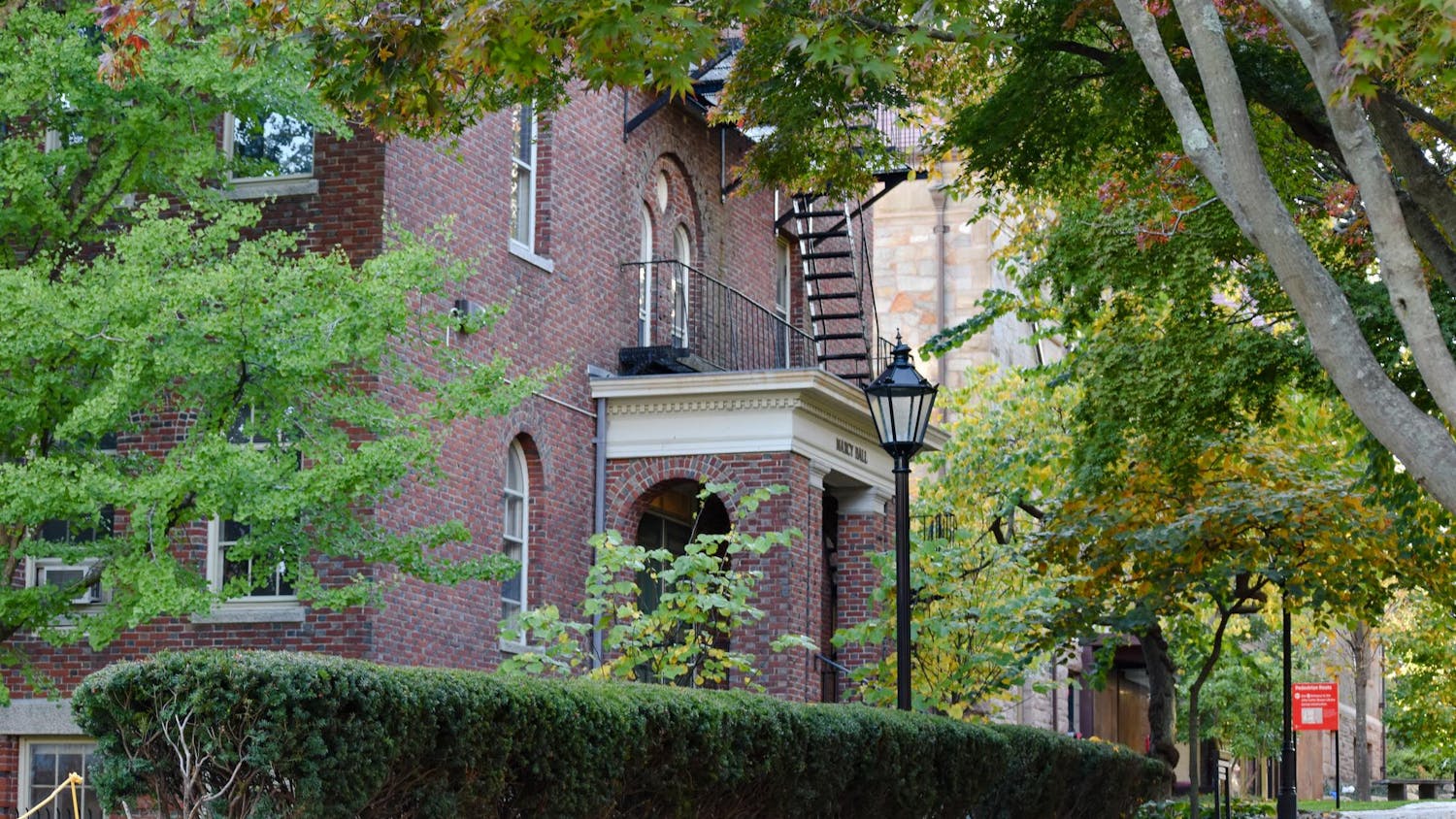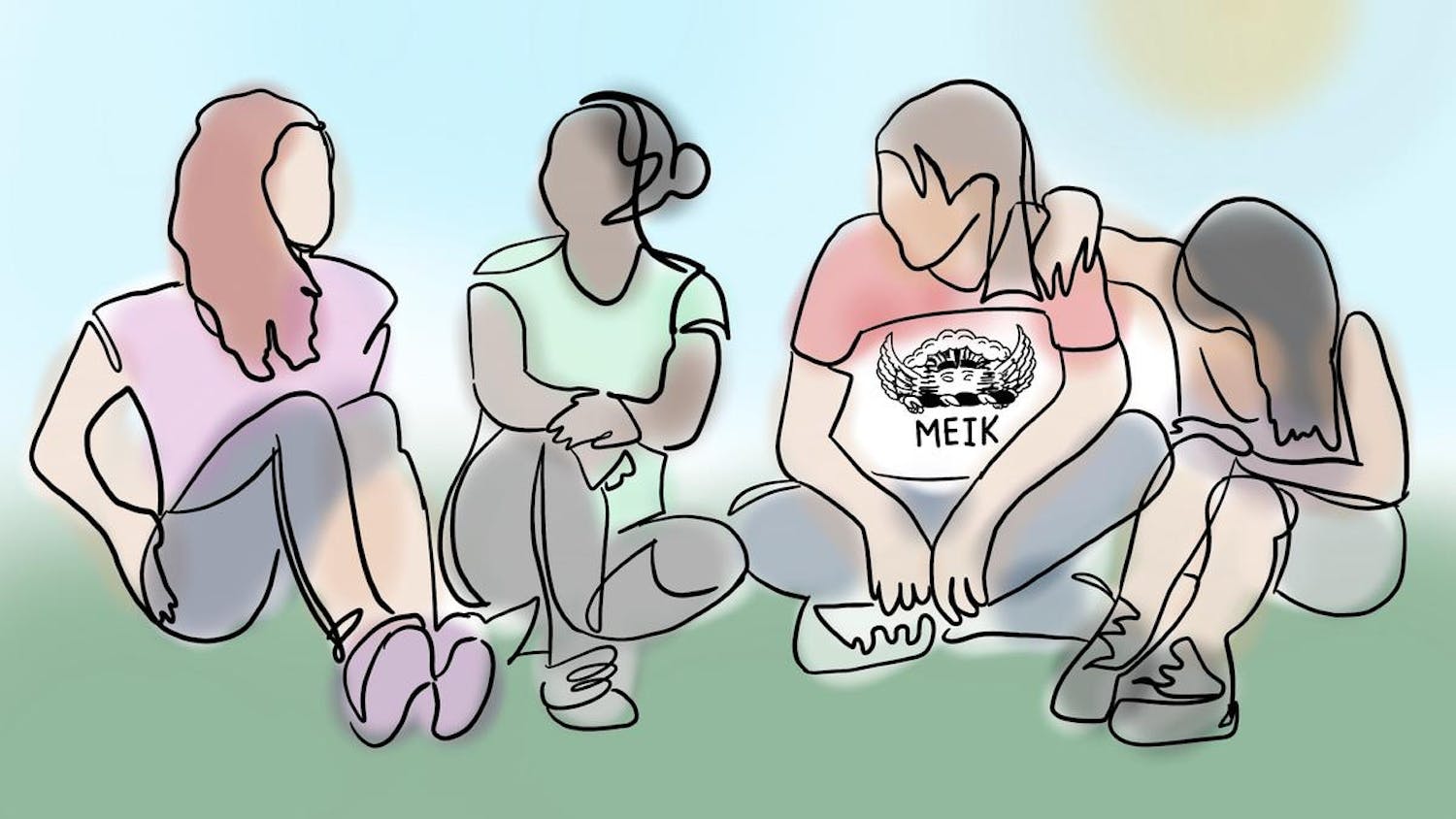The vast majority of students indicated they would not be interested in joining a Reserve Officers' Training Corps program if Brown offered one, according to a recent Herald poll. Students also expressed mixed opinions on the number of admissions spots for recruited athletes, and they almost never deemed their classes too small — only too big or just right.
Other issues the poll addressed included approval of President Ruth Simmons and the Undergraduate Council of Students, number of sexual partners this semester, satisfaction with advising and confidence in obtaining a desirable job post-graduation. Simmons' approval rating improved over last semester, rising from 62 to 68 percent.
Eighty-two percent of students polled indicated they would not be interested in joining a ROTC program. Seven percent indicated they would be interested in joining a ROTC program only if it were offered at Brown's campus, and 1 percent reported they would be interested in another institution's program. Eleven percent indicated they have no opinion or are not familiar enough to answer. Men and seniors were more likely to indicate they would be interested in joining a program if offered at Brown, though the number was still a minority.
ROTC has been a hotly debated issue on campus over the past year. The Herald's spring 2011 poll found no consensus among students asked if they would support lifting the ban on ROTC, though more students approved than disapproved. A third of students reported at the time that they either had no opinion or were not familiar enough to answer, while 43 percent approved and 24 percent disapproved.
Faculty have less favorable opinions of ROTC, though opinions are still mixed. In a Herald faculty poll conducted this fall, 31 percent of faculty reported they strongly disapproved of lifting the campus ban on ROTC, 13 percent somewhat disapproved, 7 percent had no opinion, 26 percent somewhat approved, 13 percent strongly approved and 10 percent indicated they were not familiar enough to answer.
In its October meeting, the Corporation directed the University to create an office to support students interested in exploring ROTC programs at other schools, but it agreed with Simmons' recommendation that the ban on ROTC should remain in place.
The Herald poll was conducted Nov. 2 through Nov. 3 and has a 3.1 percent margin of error with 95 percent confidence. A total of 851 students completed the poll, which The Herald distributed as a written questionnaire in J. Walter Wilson and the Stephen Robert '62 Campus Center during the day and in the Sciences Library at night.
Other results
The Corporation decided at its October meeting to lower the number of admissions spots for recruited athletes from 225 to 205. Poll respondents had mixed opinions on that reduced figure. A third of those polled indicated they are not familiar enough to answer.
A combined 28 percent of respondents said 205 spots is much too high or too high, while 13 percent said it is much too low or too low. Twenty-seven percent said 205 spots is just right. Opinions varied widely between varsity athletes and non-athletes. Only one percent of athletes said the number is too high, with none saying it is much too high, while 63 percent said it is too low or much too low. Of non-athletes, 31 percent said 205 is too high or much too high while 5 percent said it is too low or much too low.
A majority of students reported the size of their classes, in terms of number of students, to be just right. But those who did not call their class sizes "just right" almost exclusively reported them to be too large. Four percent said their classes are much too large, 28 percent said they are too large and 64 percent said they are just right. One percent said their classes are too small and no students said their classes are much too small. Four percent indicated no opinion.
Most students reported having no more than one or two sexual partners so far this semester, with 38 percent saying they have had none, 36 percent one, 9 percent two, 5 percent three to five and 1 percent six or more. One percent of respondents indicated they are not sure, and 9 percent said they have no answer. Men reported having more sex partners than women.
A majority of students expressed satisfaction with academic advising — 32 percent said they are very satisfied, 40 percent said they are somewhat satisfied, 19 percent said they are somewhat dissatisfied and 6 percent said they are very dissatisfied. Three percent reported having no opinion. First-year students were more satisfied than others — 83 percent of first-years said they are very satisfied or satisfied with advising.
Students expressed broad satisfaction with Simmons. Thirty-eight percent of those polled indicated they strongly approve of the way Simmons is handling her job as president, 30 percent said they somewhat approve, 6 percent said they have no opinion, 3 percent said they somewhat disapprove and 1 percent said they strongly disapprove. A little over a fifth of students said they are not familiar enough to answer. Varsity athletes expressed less approval than others.
As in previous Herald polls, the activities of UCS seem to be unknown to much of the student body. Over half of student respondents said they are not familiar enough to answer or have no opinion on how UCS is handling its job. Of those who answered, most said they approve — 10 percent said they strongly approve, 28 percent said they somewhat approve, 5 percent said they somewhat disapprove and 1 percent said they strongly disapprove.
Students are more likely to think their families are less wealthy, rather than more wealthy, than the family of the average Brown student. Four percent of students said their families' levels of wealth are much higher than average, 20 percent said somewhat higher, 27 percent said the same, 26 percent said lower and 18 percent said much lower. Seven percent said they had no opinion. Students on financial aid were far more likely to think their families are less wealthy.
When asked how confident or worried they are about obtaining a desirable job after graduation, students had mixed responses. Fifteen percent indicated they are very confident, 28 percent indicated they are somewhat confident, 18 percent indicated they are neither confident nor worried, 28 percent indicated they are somewhat worried and 8 percent indicated they are very worried. Three percent reported they are not considering employment after graduation. Men indicated more confidence than women.
Students were also asked what electronic devices they own. Almost all students — 98 percent — reported having laptops. Other popular devices include iPods and MP3 players, owned by 68 percent of students, iPhones, owned by 37 percent of students, Blackberries, owned by 14 percent of students and Android phones, owned by 13 percent of students. Few students reported having eReaders, owned by 6 percent of students, tablet computers, owned by 6 percent of students, and netbooks, owned by 3 percent of students.
Over the next couple weeks, The Herald will publish a series of articles about individual poll questions. Find results of previous polls at thebdh.org/poll.
Methodology
Written questionnaires were administered to 851 undergraduates Nov. 2 through Nov. 3 in the lobby of J. Walter Wilson and the Stephen Robert '62 Campus Center during the day and the Sciences Library at night. The poll has a 3.1 percent margin of error with 95 percent confidence. The margin of error is 4.6 percent for the subset of males, 4.3 percent for females, 6.4 percent for seniors, 3.6 percent for non-seniors, 6.3 percent for first-year students, 3.6 percent for non-first-years, approximately 4.7 percent for students receiving financial aid, 4.2 percent for students not receiving financial aid, approximately 9.2 percent for varsity student
-athletes and 3.3 percent for non-varsity student-athletes.
The sample polled was demographically similar to the Brown undergraduate population as a whole. The sample was 46.5 percent male and 53.5 percent female. First-years made up 24.4 percent of the sample, 29.0 percent were sophomores, 22.4 percent were juniors and 24.3 percent were seniors. Varsity athletes made up 11.6 percent of the sample. Of those polled, 45.0 percent currently receive financial aid from Brown. Statistical significance was established at the 0.05 level.
Senior Editor Julien Ouellet '12, City and State Editors Rebecca Ballhaus '13 and Claire Peracchio '13, Senior Staff Writers Greg Jordan-Detamore '14 and Jacob Comer '13 and Staff Writer Alexandra Macfarlane '13 coordinated the poll. Herald section editors, senior staff writers and other staff members conducted the poll.
ADVERTISEMENT




